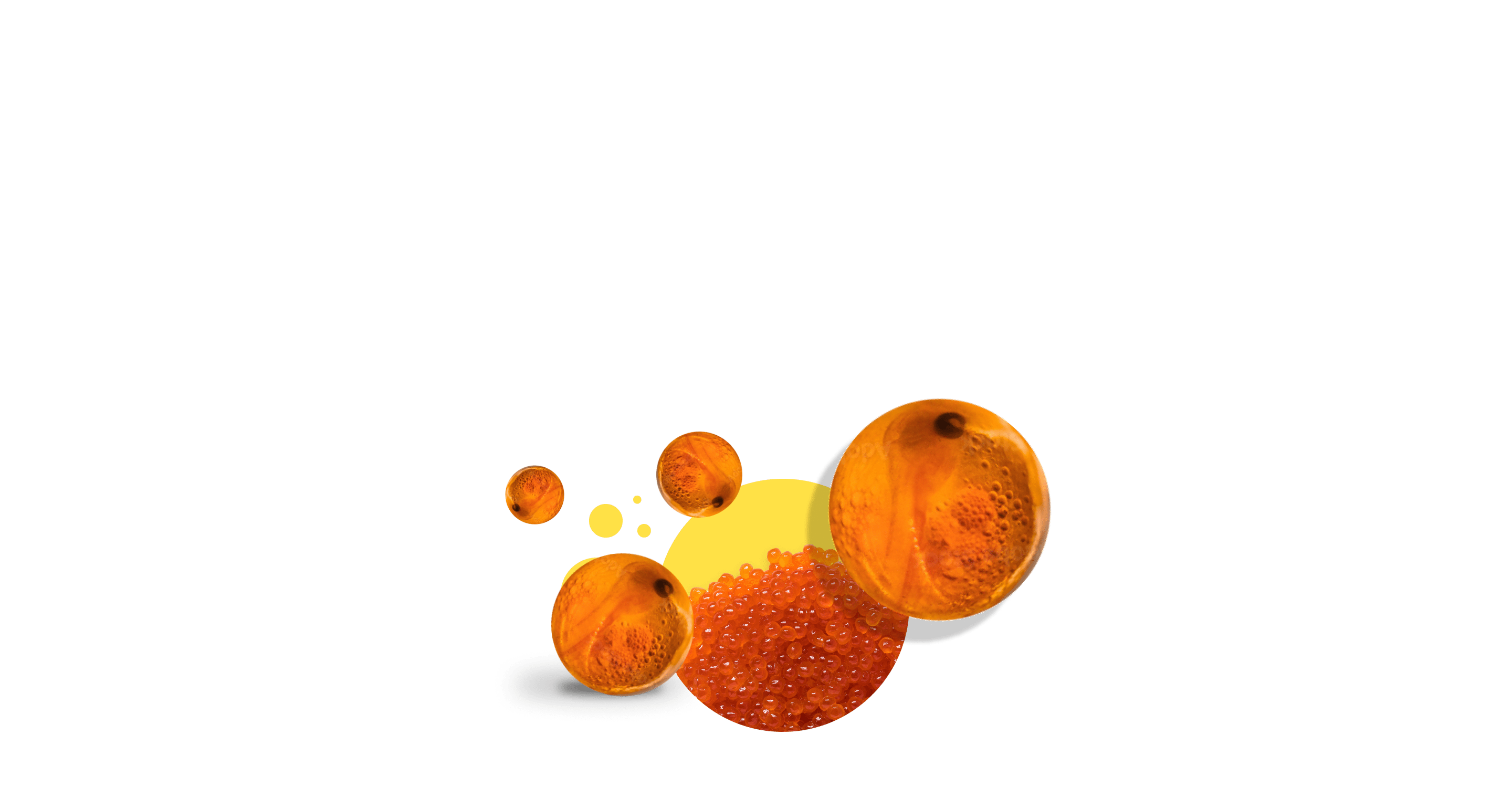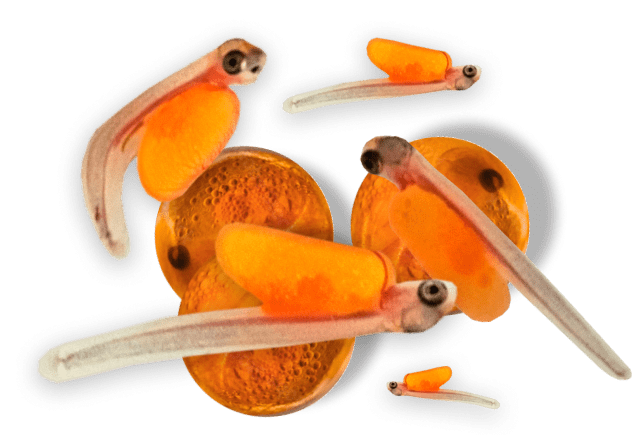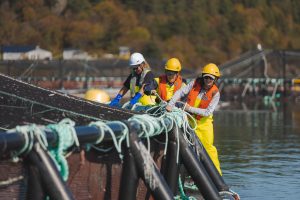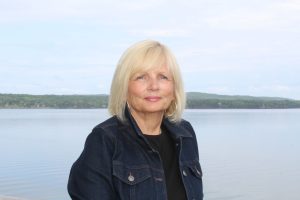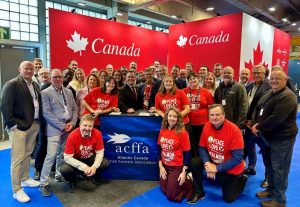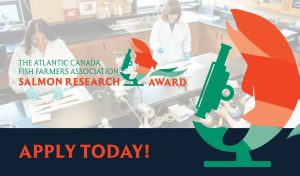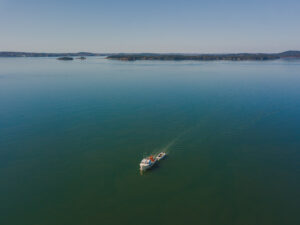Farmed Atlantic salmon begin their life cycle as eggs, which are collected from adult salmon broodstock. The young fish are reared from eggs in land-based freshwater hatcheries for 12 to 18 months.
When the fish are biologically ready to move to salt water, farmers transport them to ocean farms where they currently remain for the next 18-24 months in large enclosed floating cages that are moored to the ocean floor and engineered to withstand the challenging Atlantic tides, currents and weather.
Atlantic salmon thrive in their natural ocean habitat inside their enclosed cages where they have lots of room to swim and follow their natural schooling behavior. Nets, specifically designed for salmon farms, fully enclose the cages to contain the fish and protect them from predators.
